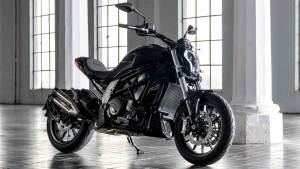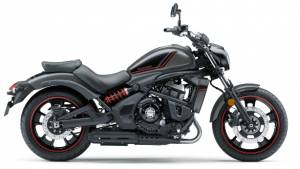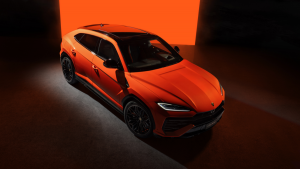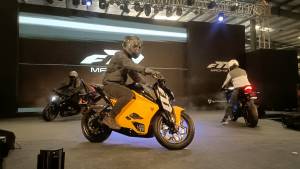2018 Kawasaki Vulcan S: Top five facts
The Kawasaki Vulcan S brings a new, Japanese flavour to the Indian middleweight cruiser segment, which is at a very nascent stage currently. Harley-Davidson pretty much created that segment with the Street 750 a couple of years and there's lots of room still for more players to come in. Meanwhile, here's the top five things you need to know about the newest Kawasaki in town!
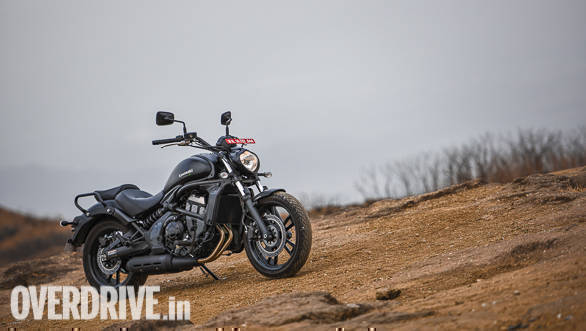 The Kawasaki Vulcan S is an interesting mix to the Indian cruiser space and is in fact one of the only Japanese cruisers on sale in the country
The Kawasaki Vulcan S is an interesting mix to the Indian cruiser space and is in fact one of the only Japanese cruisers on sale in the country
Powertrain
The Kawasaki Vulcan S uses the same 649cc, liquid-cooled, parallel-twin engine as it's sibling, the Kawasaki Ninja 650. That said, this is the older version of the engine that powered the previous generation Ninja 650. The engine on the Vulcan S thus does not get ride by wire like the new Ninja 650 does. The engine has also been detuned as compared to its state of tune in the Ninja and offers 61PS and 63Nm in this guise. Bottom and midrange performance have been tweaked given that the Vulcan S is a cruiser and power delivery is a lot linear than it is on the Ninja 650. Performance is quick, as the Vulcan S managed a 0-100kmph time of 6.73 seconds in our VBOX test. The engine is mated to a six speed transmission that's smooth, slick and precise to use, though the Vulcan S does not get the new Ninja 650's slipper clutch. Fuel efficiency is impressive at 18kmpl in city and 24.3kmpl on the highway.
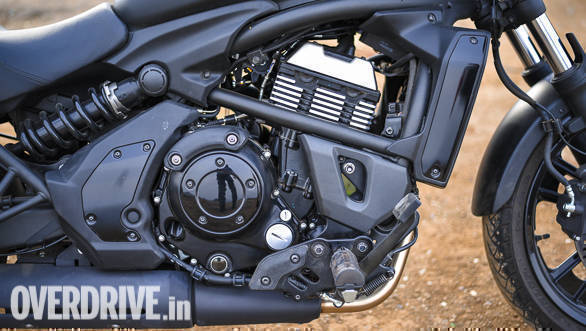 The Kawasaki Vulcan S uses the same engine as the last generation Kawasaki Ninja 650 and brings in the same levels of refinement as we known the engine to always offer
The Kawasaki Vulcan S uses the same engine as the last generation Kawasaki Ninja 650 and brings in the same levels of refinement as we known the engine to always offer
Build quality
The Kawasaki Vulcan S comes in via the more affordable CKD route but boasts the same premium build quality the Japanese manufacturer is known for. Quality of plastics, paint finishes and overall fit-finish levels are very high and the Vulcan S thus exudes a very upmarket feel, as if it were a more expensive motorcycle. The Vulcan S wears a matte black paint finish from end to end which has an even finish which adds to that feel immensely. With that said, the pillion grab handles and the massive saree guard that have been added by Kawasaki to meet Indian regulations are not only an eyesore but are also not well finished. The welds on the pillion grabs handles are not clean and leave something to be desired in terms of design and finishing both.
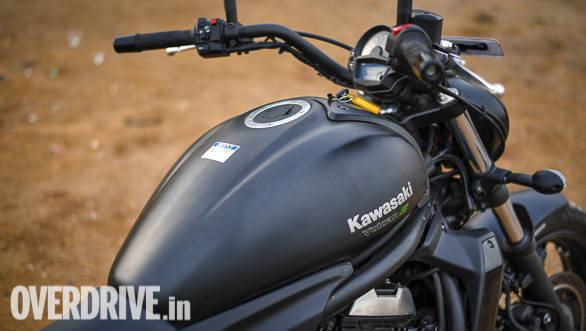 Paint quality, fit-finish levels and overall build quality on the Kawasaki Vulcan S are impressive, as is the case with all Kawasaki products
Paint quality, fit-finish levels and overall build quality on the Kawasaki Vulcan S are impressive, as is the case with all Kawasaki products
Ride and handling
Coming from a brand like Kawasaki the Vulcan S does not disappoint on the handling front. It feels sporty and confident when ridden enthusiastically despite being a cruiser. The suspension is tuned well and offers a likeable mix of a comfortable ride and sporty handling both and makes for a very engaging feel in conjunction with the bike's tubular chassis. The bike's handling abilities though are limited by its low set foot pegs and the low ground clearance of just 130mm. The chassis and suspension have ample potential around corners, but the foot pegs are quick to grind when you lean around corners which limits that potential. The suspension setup also makes for a surprisingly pliant ride quality on bad roads, soaking up bumps and potholes well enough to ensure shocks are not transmitted to the rider. The seat helps on the that front too, though the cushioning could have been slightly softer to enhance comfort over long rides.
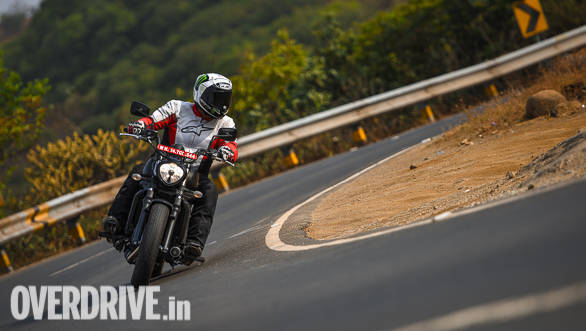 Its low set footpegs limit the Kawasaki Vulcan S' cornering abilities but the chassis and suspension hold more potential and higher set pegs should allow better lean angles around corners
Its low set footpegs limit the Kawasaki Vulcan S' cornering abilities but the chassis and suspension hold more potential and higher set pegs should allow better lean angles around corners
Rider aids
Positioned as a middleweight cruiser the Kawasaki Vulcan S isn't high on equipment levels, particularly rider aids, and it only gets ABS. Thankfully ABS is part of standard equipment, though the Vulcans S has no other electronics whatsoever. The instrument cluster is straight off the ER-6n which is now the Kawasaki Z650 and is a single pod unit. It offers good amounts of information for a cruiser though, including tank range, current and average fuel efficiency as also a tripmeter.
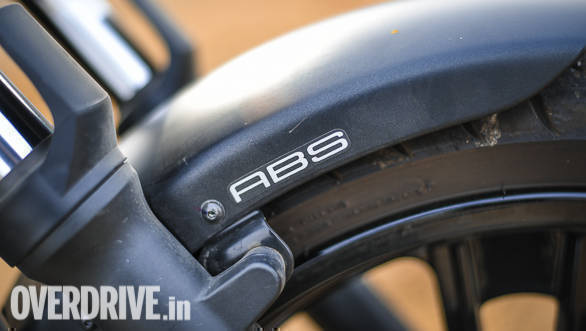 ABS is part of standard equipment on the Kawasaki Vulcan S
ABS is part of standard equipment on the Kawasaki Vulcan S
Pricing and competition
Priced at Rs 5.44 lakh ex-showroom the Kawasaki Vulcan S faces off directly against the Harley-Davidson Street 750 that is now priced at Rs 5.42 lakh ex-showroom after the recent price hike done by the manufacturer on all its CKD models. Consecutively the Harley-Davidson Street Rod is also more expensive now, priced at Rs 6.45 lakh but is still a direct competitor for the Vulcan S.
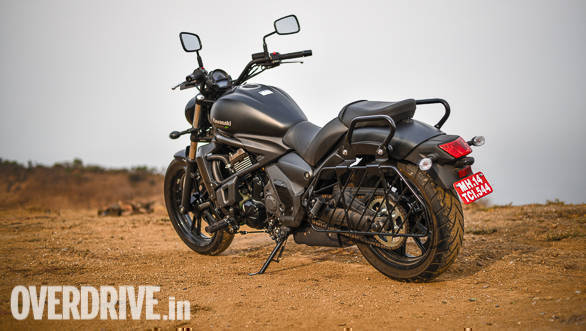 The Kawasaki Vulcan S competes with the Harley-Davidson Street 750 and the Harley-Davidson Street Rod
The Kawasaki Vulcan S competes with the Harley-Davidson Street 750 and the Harley-Davidson Street Rod
Starts Rs 5,79,000
649cc
6-Speed
61.00
62.40
-NA-
Starts Rs 5,34,000
749cc
6-Speed
-NA-
59.00
17.42 Kmpl
Starts Rs 5,99,000
749cc
6-Speed
55.00
64.00
-NA-
Starts Rs 6,24,000
649cc
6-Speed
68.00
64.00
-NA-
Starts Rs 5,94,000
649cc
6-Speed
68.00
64.00
-NA-
Related Stories
Top Stories
Latest Videos
Most Popular
- Budget Sportbike Showdown: Kawasaki Ninja 500 vs Aprilia RS 457 vs Yamaha YZF-R3
- 2014 Triumph Daytona 675 vs 2024 Kawasaki ZX6R - A Decade of Evolution in Supersport Motorcycles
- Mumbai-Pune Expressway speed restrictions updated
- Nissan Magnite EZ-Shift review - is the AMT any good?
- Nitin Gadkari states that tax on Hybrids should be reduced to 12 percent in the coming future
